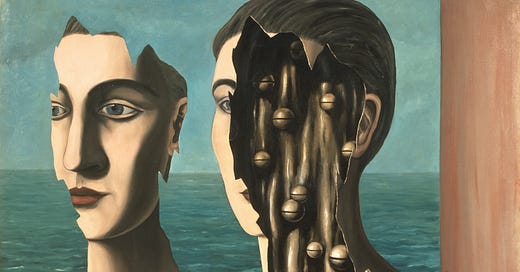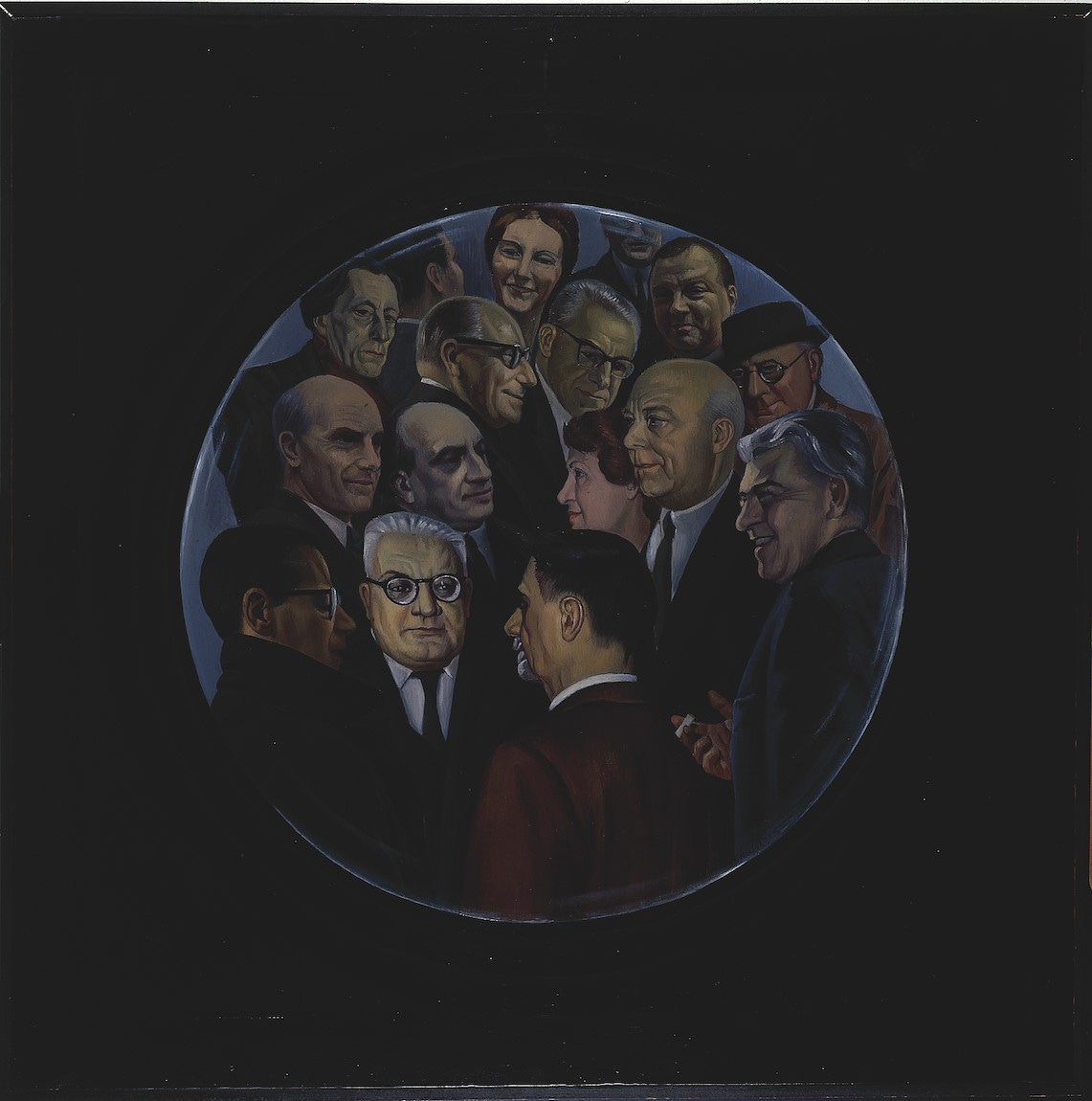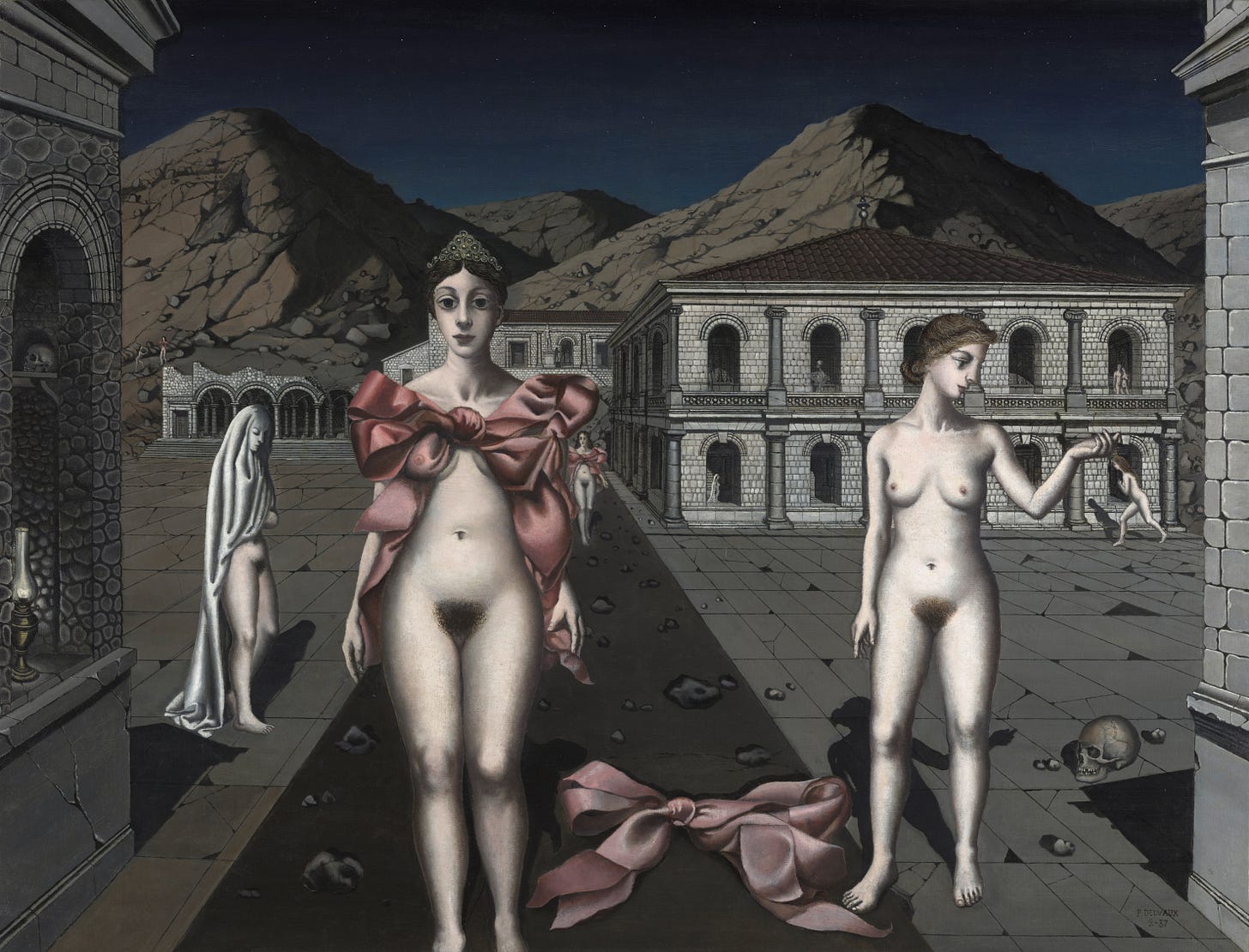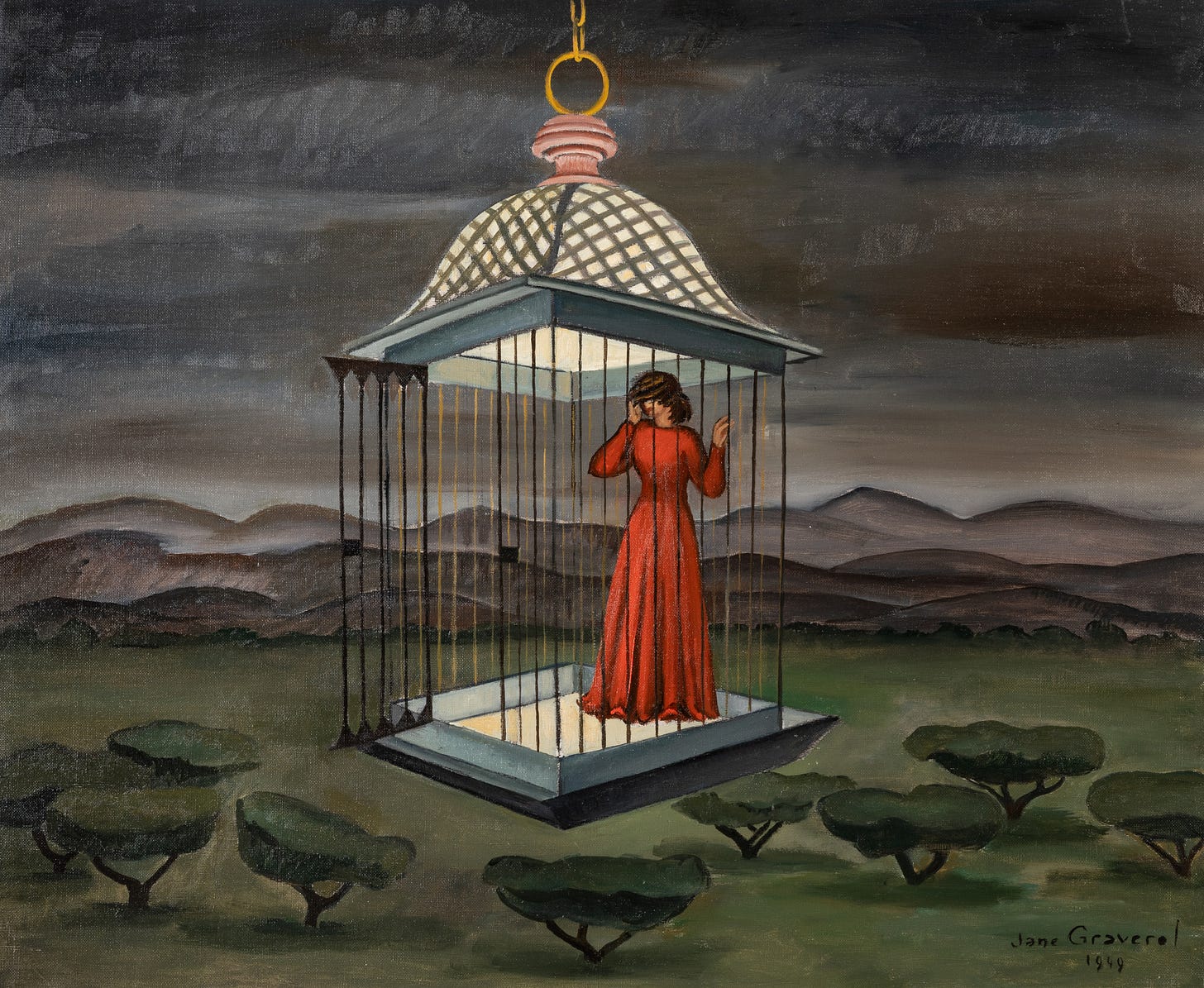The Belgian Trip Review Issue: Surrealism in Belgium
We take a look at the uniquely Belgian take on Surrealism which is explored in two enticing shows.
The Belgian artist René Magritte is for many the poster boy of Surrealism, which celebrates its 100th anniversary this year. His painting The Treachery of Images (1929) featuring a pipe above the words “Ceci n’est pas un pipe,” (this is not a pipe) typifies the cerebral yet humorous approach to Surrealism in Belgium which is explored in two exhibitions, Histoire de ne pas rire at BOZAR and Imagine! 100 Years of International Surrealism at the Royal Museums of Fine Arts of Belgium (RMFAB).
René Magritte, Le double secret (1927) Image: ⓒ succession Magritte/Sabam Belgium 2024
Imagine! 100 Years of International Surrealism is a touring exhibition with each venue exploring the host country’s response to Surrealist ideas, with Brussels being the first port of call. The show reveals how Belgian Surrealism had its roots in Symbolism. “The pioneers of Surrealism in Belgium passed on an arsenal of images, ideas and inspiration to the next generation of Surrealists. The strange worlds of Felicien Rops, Fernand Khnopff, Jean Delville, William Degouve de Nuncques and Léon Spilliaert, as well as the Frenchmen Gustave Moreau and Odilon Redon, were so inviting to explore that they sometimes became emblematic,” explains Francisca Vandepitte, the curator of the exhibition.
Both Symbolism and Surrealism share a common interest in interiority and the world of dreams. This is exemplified by the pairing of Fernand Khnopff’s Portrait of Marguerite Khnopff (1887) which shows the young woman standing before an open door, with René Magritte’s The Unexpected Answer (1932) which features a door with an enigmatic shape carved out of it in lieu of a figure.
Jane Graverol, The Drop of Water (1964), Image ⓒ Sabam Belgium, photo: Luc Schrobiltgen. The painting shows the leading figures of Belgian Surrealism
When it comes to the unique qualities of Belgian Surrealism Vandepitte says that although stylistically it is “more traditional, more academic, painted in an Old Master style, this does not make it any less subversive.” A key element is “disconnecting the images, words and meaning,” she says.
Histoire de ne pas rire delves into more detail around the key figures of Belgian Surrealism, including the poet Paul Nougé, the brains behind the Brussels Surrealist group whose secretive personality meant that he preferred anonymity. Surrealism, of course, had its origins in the trauma of World War I and was a “movement of rebellion against institutions, religion, the army and all the powers who tried to imprison the mind,” says Xaniver Cannone, the exhibition’s curator. Nougé believed that art could have the same impact as a carefully placed bomb. From 1924 he gathered around him a group of writers and artists such as Camille Goemans, Marcel Lecomte and, of course, Magritte, who all agreed, perhaps optimistically, that they needed to change the world through their art.
Magritte is undoubtedly the star of the show but Paul Delvaux’s work also stands out. From the 1930s he created dreamlike images populated by nudes, skeletons and trains. Like Magritte he was heavily influenced by De Chirico.
Paul Delvaux, Les Noeuds Roses (1937), Image ⓒ Foundation Paul Delvaux, Sint-Idesbald - Sabam Belgium 2024, photo: Rik Klein Gotnik
Both Histoire de ne pas rire and Imagine! are notable for highlighting the work of the currently little known female Belgian Surrealists Jane Graverol and Rachel Baes. Graverol’s mysterious, uncanny works combine the influence of Magritte with female themes and iconography. Her work is a “search for liberation from the conventions of reality, but from a female point of view. She is focussed on getting rid of patriarchal structures,” says Vandepitte.
Jane Graverol, Untitled (The Liberated Woman) (1949) ⓒ Sabam Belgium 2024
Although in France Surrealism was officially declared dead in 1969 when the Paris group formally disbanded, in Belgium the story continued with its subversive humour becoming deeply ingrained in the national psyche. “The Belgian state of mind is unique. We’re not like the big nations with a long history. We were never arrogant. Belgian people are more able to laugh at themselves,” says Canonne, pointing to the undoubtedly Surreal experience of the country being without a government for almost two years between 2018 and 2020 which was greeted with little more than a shrug. It’s a state of mind that has clearly served them well.
Histoire de ne pas rire is at BOZAR until 16th June
Imagine! 100 Years of International Surrealism is at the Royal Museums of Fine Arts of Belgium until 21st July








